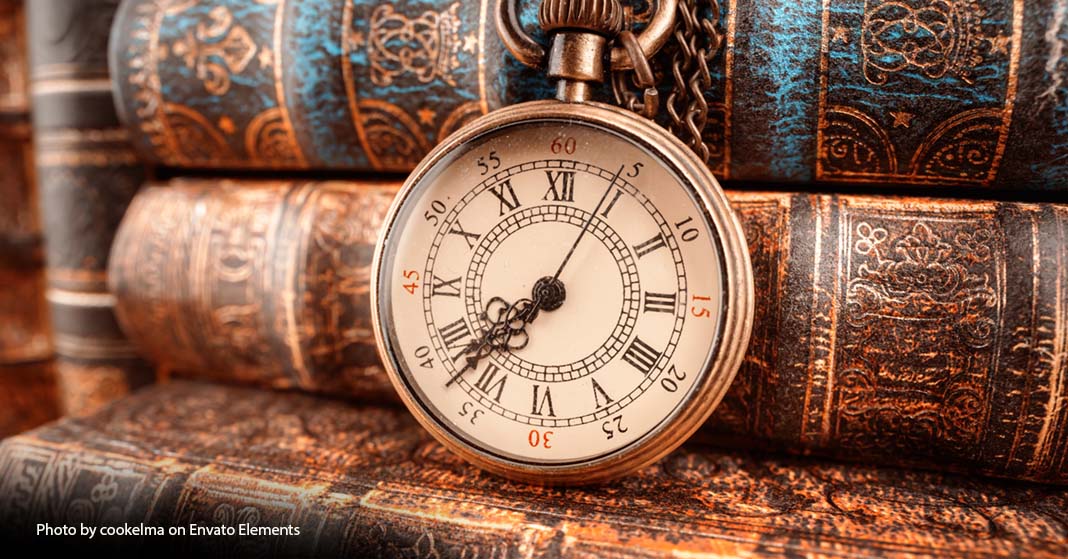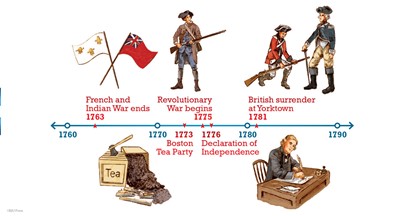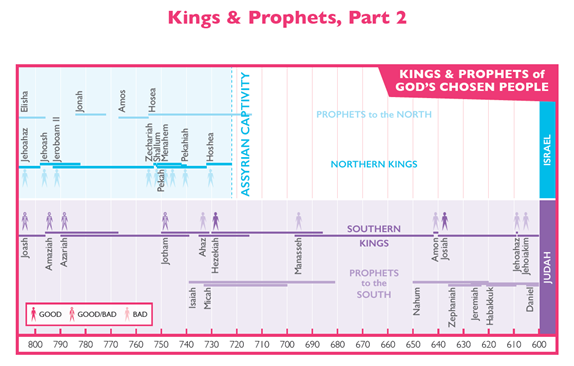
Many kids struggle in history classes because they are unable to put a list of events and people into a historical context. According to The Nation’s Report Card, only 15% of students in Grade 8 were proficient in U.S. History in 2018. Making timeline projects with your kids will vastly improve their ability to see the big picture and evaluate cause and effect. These skills are critical to historical thinking. Use these creative kid’s timeline project ideas with your kids to help them understand how events fit into their historical contexts.
What is a timeline for kids?
A timeline is a visual learning aid that helps students organize a series of events in the order they happened. Each event or person should have a date (or time) clearly marked on the timeline. Timelines provide a framework to show potential relationships between historical events. Give students the opportunity to make the timeline themselves. They will use more of their senses in the learning process and retain more of what they are learning.
How do you explain a timeline to a child?
When explaining a timeline to a child, you might reference tasks they perform every day. The events in their bedtime routine might include a snack, followed by getting pajamas on, brushing their teeth, and bedtime stories. A very young child can understand that these events happen in a certain order. They also have a basic grasp of cause and effect. For example, because I ate a snack, I need to brush my teeth before going to bed. With this foundational example in place, you might tell them about what a telephone was like when you were young. You can explain how phones have changed over the course of your life. The features of each new phone build on previous features and could be ordered on a timeline. By referring to a time before they lived, you broaden their capacity for historical thinking.
How to Create a Kids Timeline Project
1. Choose a topic and a type of timeline (listed below).
2. Choose a format.
- Wall poster: This is a great format for keeping your timelines visually present. Decide if you have space on your wall for long sheets of butcher paper or for poster boards.
- Notebook: You could use a scrapbook or a binder with sheet protectors to create a notebook timeline. Events would proceed from earliest at the front to latest at the back.
- Storyboard: This format is great for story timelines but also works for other types. The key component of a storyboard is some type of picture or drawing for each event.
- Fold-out: Make an accordion style book using letter-sized sheets or index cards attached together.
- Pennant: Create an index card for each event on your timeline and string them together like pennants.
- Lap books: If you are not familiar with lap books, you can find many resources online about them. The basic idea is to take a file folder and attach mini-books or other envelopes and flaps inside, then fill the books and envelopes with information to thoroughly survey a topic. This format is great for a child to review his work, because the project fits in his lap.
- Digital: Digital timelines have the advantage of being easily shareable. Use PowerPoint with the Office Timeline add-in or a free online resource such as Piktochart.
3. Choose how many and which key events you will include.
Keep it simple for younger children. Your input is useful for this step, but be sure to let kids have as much choice in the design of the project as possible.
4. Sketch out the timeline to make sure all your events will fit (except for ongoing projects).
5. Choose the materials you need for the format you selected.
- Buy posters, paper or index cards
- Draw pictures or find images online
- Write or type the events
- Find the digital timeline application you want to use
6. Break it into small tasks and tackle one event at a time.
7. Show off your completed timeline project by sharing with family and friends.
6 Creative Timeline Project Ideas

1. Historical Event Timeline
A historical event timeline is probably the type that first comes to mind. Perhaps you are studying the Revolutionary War, so your timeline might begin with the Boston Tea Party in 1773. If you include the conclusion of the French and Indian War in 1763, children might notice a possible cause and effect relationship.
Historical events from the Bible might also be arranged on a timeline. The days of creation make a simple timeline for young children. I once created a timeline of the Bible with a Sunday School class of upper elementary children. Our timeline included the kings of Israel and Judah, whether they pleased God, and the concurrent prophets. Bible 7: Story of the Old Testament includes similar timelines. Reading separate books of the Old Testament is enriched by seeing these relationships. You might also notice the lack of good kings in the Northern Kingdom of Israel and propose a relationship to its earlier captivity.

2. Biographical Timeline
A biographical timeline shows key events in a person’s life. The person might be a historical figure like Abraham Lincoln, a missionary like Hudson Taylor, or a family member the student loves. A child could also create an autobiographical timeline. Include date of birth, dates of siblings’ births, times your family has moved, or other events they think are significant.
3. World History Timeline
A world history timeline is the broadest of these examples. Any significant event in history can be included, whether you learned it in history, science or another class. A fun way to create a world history timeline is to make it an ongoing project. If you are teaching children at more than one grade level, this is a great project they can work on together. A timeline of the world has no limits, other than the size of your wall or paper. Include primary sources from history when possible.

4. Timeline of a Book or Story
Creating a timeline of events in a story is a great project for reading or literature class. Children will be able to visualize the story arc with specific key events from the story. After you make several story timelines, they might even pick out the pattern that most stories follow. They will see the inciting incident, action rising to a climax and then falling to a resolution.
5. Science Life Cycle Timeline
Timelines are not limited to history and literature class. In science class, many insects have a life cycle that includes egg, larva, pupa, and adult stages. These stages are sequential and might be labeled with hours or days rather than specific dates.
6. Timeline of a Particular Subject You Are Learning
A student can keep a record of her progression in a particular subject in a form that is like a timeline. You might have children create anchor charts for important concepts in mathematics. Date each anchor chart and keep them in a notebook or portfolio in order. At the end of the year, you will have created a timeline of your study of mathematics. This project would be great to use for review at any time throughout the study. This project is a great addition to a portfolio of students’ work for homeschool reporting purposes.
Homeschool Timeline Benefits
Using a prepared timeline to teach history is a beneficial visual aid. It will help kids to see the big picture and think historically. The process of creating a timeline takes that benefit a step further. It will also help them to retain the key dates, people, and events. Rather than seeing history as a jumble of small snippets of information, students will start to grasp the overarching storyline of human history. With the BJU Heritage Studies curriculum, students will have a Biblically-integrated view of history. They will see how God has orchestrated events of human history for His glory.
• • • • •
Valerie is a wife and a mother to a very busy toddler. In her free time she enjoys reading all kinds of books. She earned a B.S. in Biology from Bob Jones University, minoring in Mathematics, and a Ph.D. in Molecular Genetics from Ohio State University. Valerie has 15 years of experience working in research laboratories and has coauthored 8 original research articles. She has also taught several classes and laboratories at the high school and college levels. She currently works as a Data Analyst and a freelance writer.
Leave a Reply